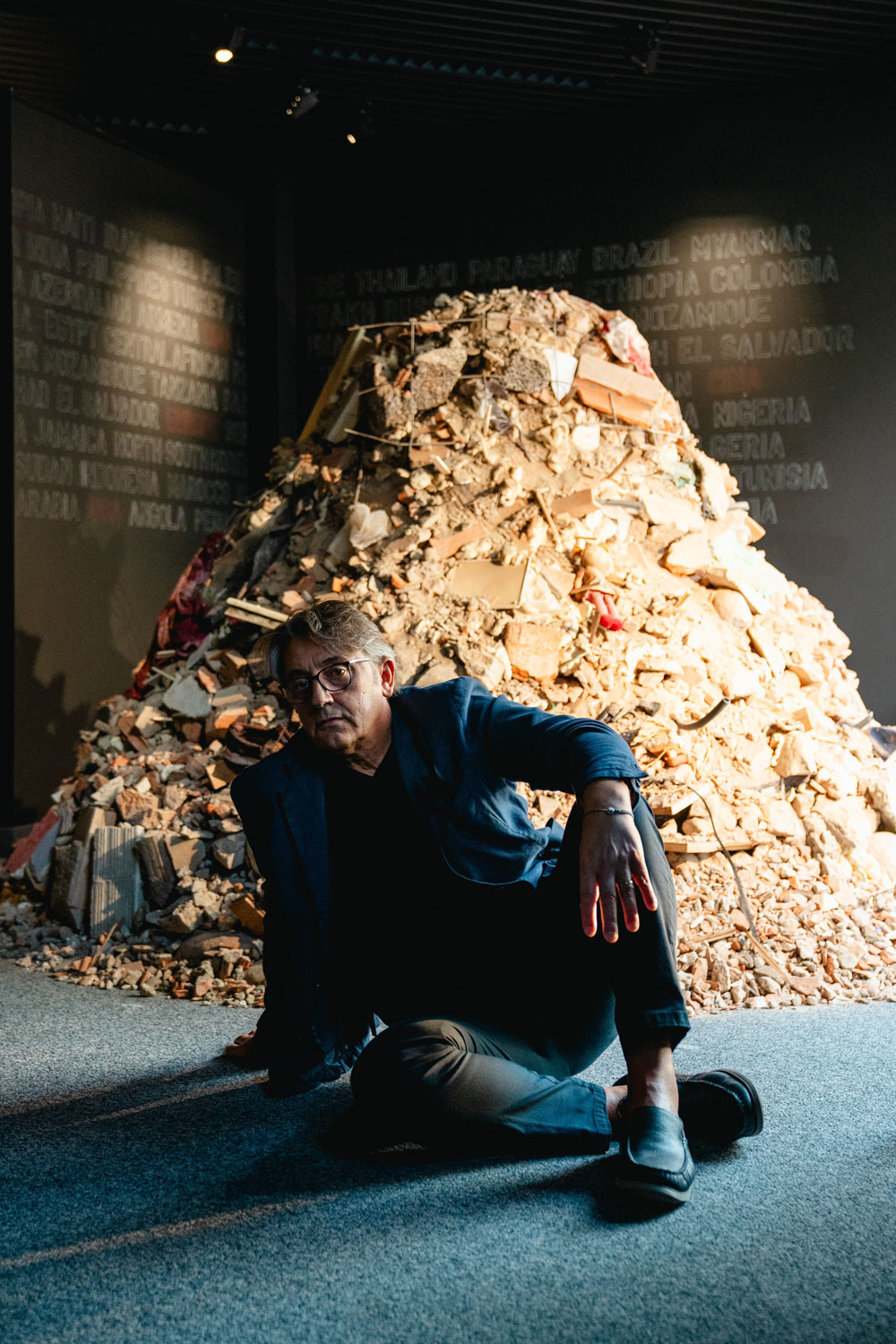
Antonello Diodato Guardigli (a.k.a. ADGART) with his representations at the 2024 Venice Biennale. He does so in the Grenada Pavilion with a site-specific installation entitled “Oltre” (translated into English as “Beyond”): debris and rubble, in which the centrality of “relationship” will be a fundamental prerequisite for both individual and collective growth.
A work with a strong visual impact, completely contemporary in the actuality in which we find ourselves, as well as in chaos that is only apparent because each object refers to places and tragedies that are the “narrative of our time”, the artist insists, “in which each of us is implicated”. Where deafening noise still echoes.
Where the abnormal is considered normal. This is the drift, because in the long run it gives an increasingly catastrophic vision for huma-nity, for sense and reason, when there are many conflicts in the world in which those who lose their lives are mostly civilians, sacrificed in wars between greater powers.
And that is why we must be ready to fight against indifference and we must be ready to go beyond the rubble Diodato Guardigli suggests. To perceive this fullness in a pyramid of rubble, to perceive a drama and an emptiness that makes the mystery of art shine in our eyes and envelop our souls, that transforms us into a complementarity that is the negation of a difficult social and economic moment, and that gives hope in a contribution that can overcome a pandemic crisis.
“No man is an island, whole; every man is a piece of the continent, a part of the continent (...). And so never send to know for whom the bell tolls: it tolls for you”.
These are the lines of the poet John Donne that we read in the press release of the Venice Biennale. They summarise a humanity bound by a network of stories, to the point that death becomes a collective, communal mourning.
Contemporaneity unfortunately pours over the masses in a practice that turns morality into an irrelevant value, incapable of a cultural profile movement of denunciation. The artist is no longer influenced or conditioned by the context in which he works.
This is not the case with ADGART. Instead, in this work and in all his works, he challenges the real world in an investigation of the destiny of the individual and of humanity in relation to the expectations of the destiny of creation, in a lyrical and inspired space-time, in an ever-changing correspondence with knowledge.
A metamorphosis whose goal is knowledge. The style that our artist articulates, therefore, in the case of communication through sensiti-vity to civil coexistence, so much that it expresses an artistic context based on the model of being together.
His works are poetic experiences of life and help us to live, or rather to understand. A contribution ‘beyond’ an ontologically insignificant materialism, to the discovery of existence in the world.
A metaphysical view that the observer has independently of the objects in view, in a representation of the whole as seen in the turning of the pages of a book, in the narrative, in the movement of a doll, a toy, a broken bowl... in the moments that shock, in the dramas caused by ‘systemic thinking’, monolithic in its certainties.
This is the beginning of forty years of Antonello Diodato Guardigli’s art. Forty years in which he has held numerous exhibitions and achie-ved success with both the public and critics.
Not only as a painter, he has also held important positions such as Director of the Lombardy Delegation of the European Union of Art Experts, Deputy Director of the Don G. Bellini Art Gallery Museum in Sarnico (Bergamo) as well as through his participation in the Milan Expo 2015. Throughout his career he has also participated in and pu-blished in several trade magazines.
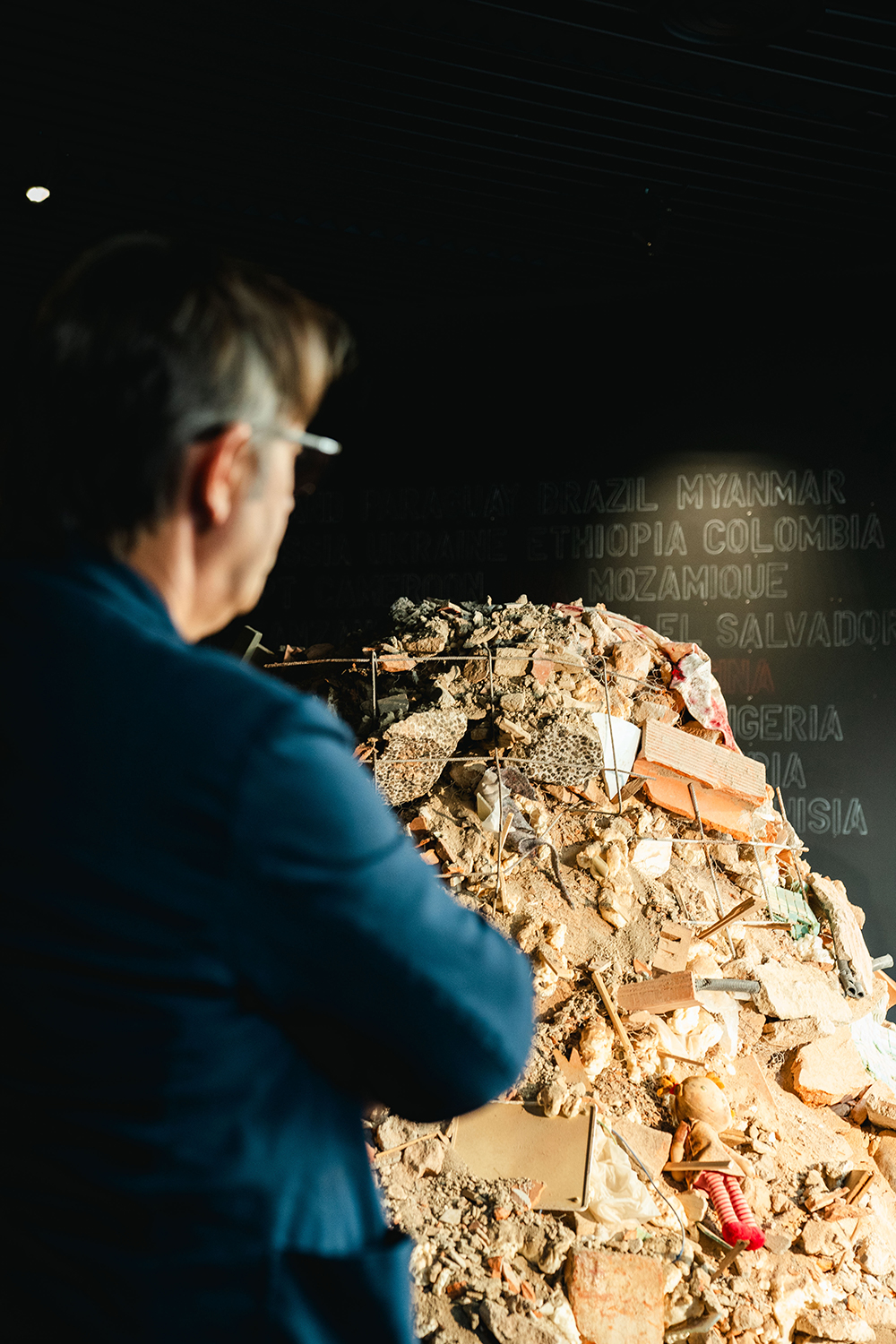
He has also been a participant in the most important national, inter-national and world fairs of contemporary art.
He observes everything in order to acquire the practice or be influen-ced by it to the extent that it is right for the artist to maintain a distinguishable personal order in maintaining the prevalence of the use of painting.
This is due to the informality of European art.
Themes that our author’s art is increasingly focused on, in a her-meneutic operating spectrum that combines various artistic and se-quential simultaneities, condensing their mnemonic function to de-termine reconsideration of ‘new’ on the basis of juxtaposition to the ‘pre-existing’, as a testimony to exploring in order to change.
Therefore, in ‘Oltre’ there is the collapse of illusion, there is history, which is memory and consciousness, and man in his impotence to change, remaining in what Nietzsche defined as the will to power. And here is the rebellion of our artist, who transmits through matter his energy against the inability to overcome the apparent, to the point of bringing out in his works his fragments, assembled through tra-ces, signs, colours and pigments, in contrast, beyond the oblivion of being, to create a landing place in a new world, with his own personal language, as in the writing of the Egyptians, expressing concepts not through syllables but through the meaning of objects, transforming the signifier into the meaning of an objectified art, for a community that implies a “giving of oneself together”.
In a practical and pragmatic allegorism: Diodato Guardigli inherited from his Romagnola mother his imagary and from his Campano fa-ther, and owing to his continuous travels to experience, he inherited “stratifications of cultures, coexistences of times, wounds, testimo-nies of a present that embraces history, that mixes with other langua-ges, other laws, other domains.”
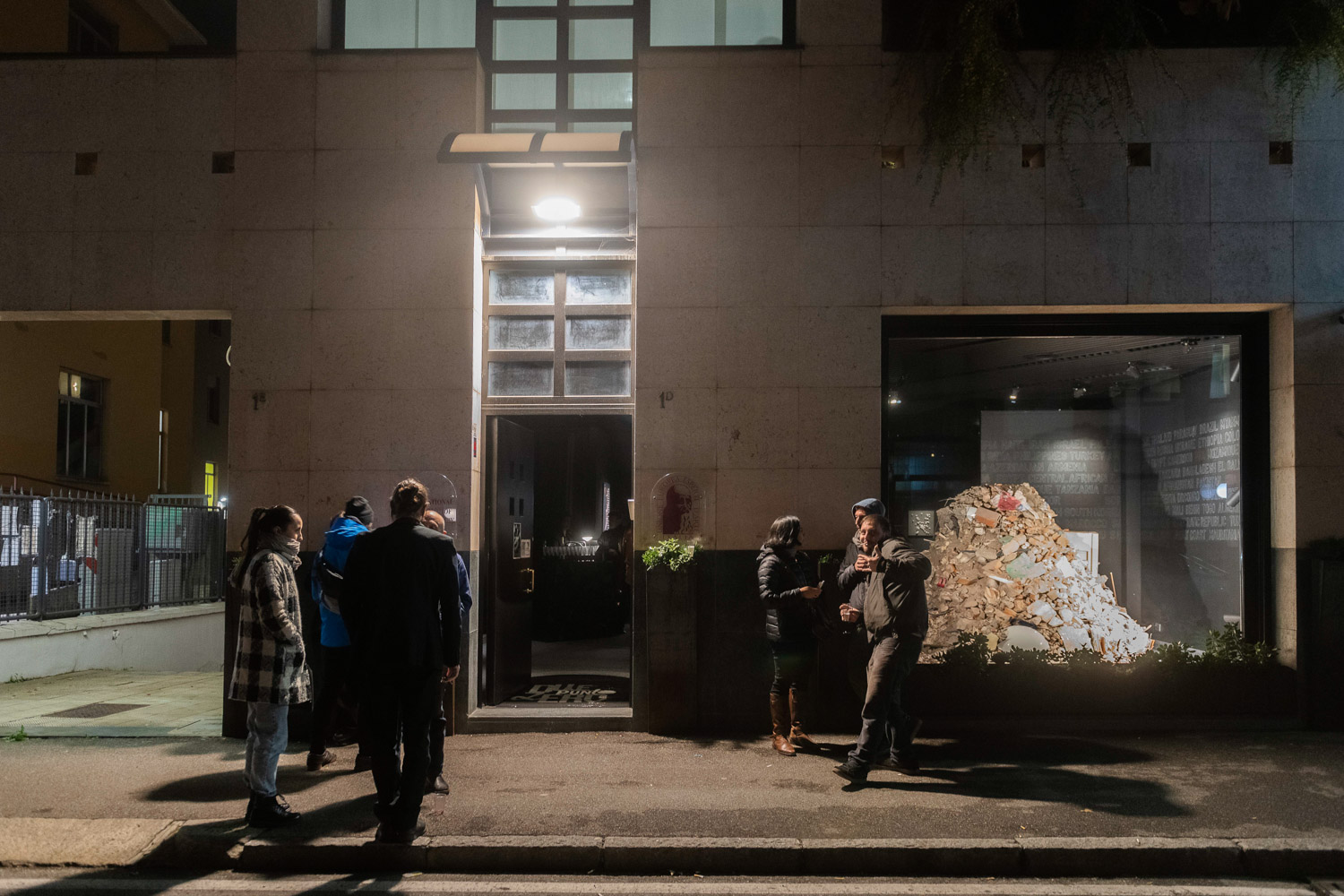
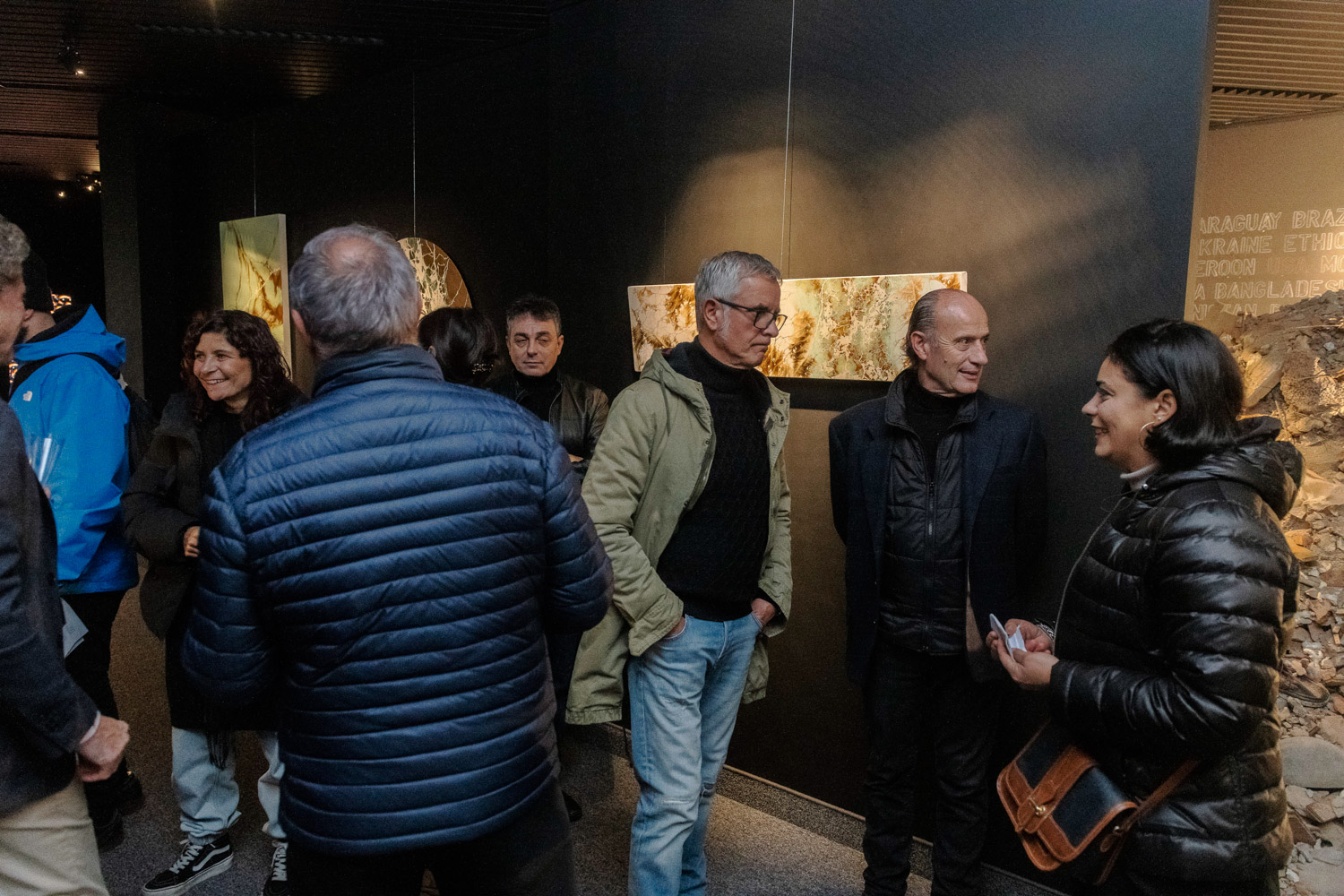
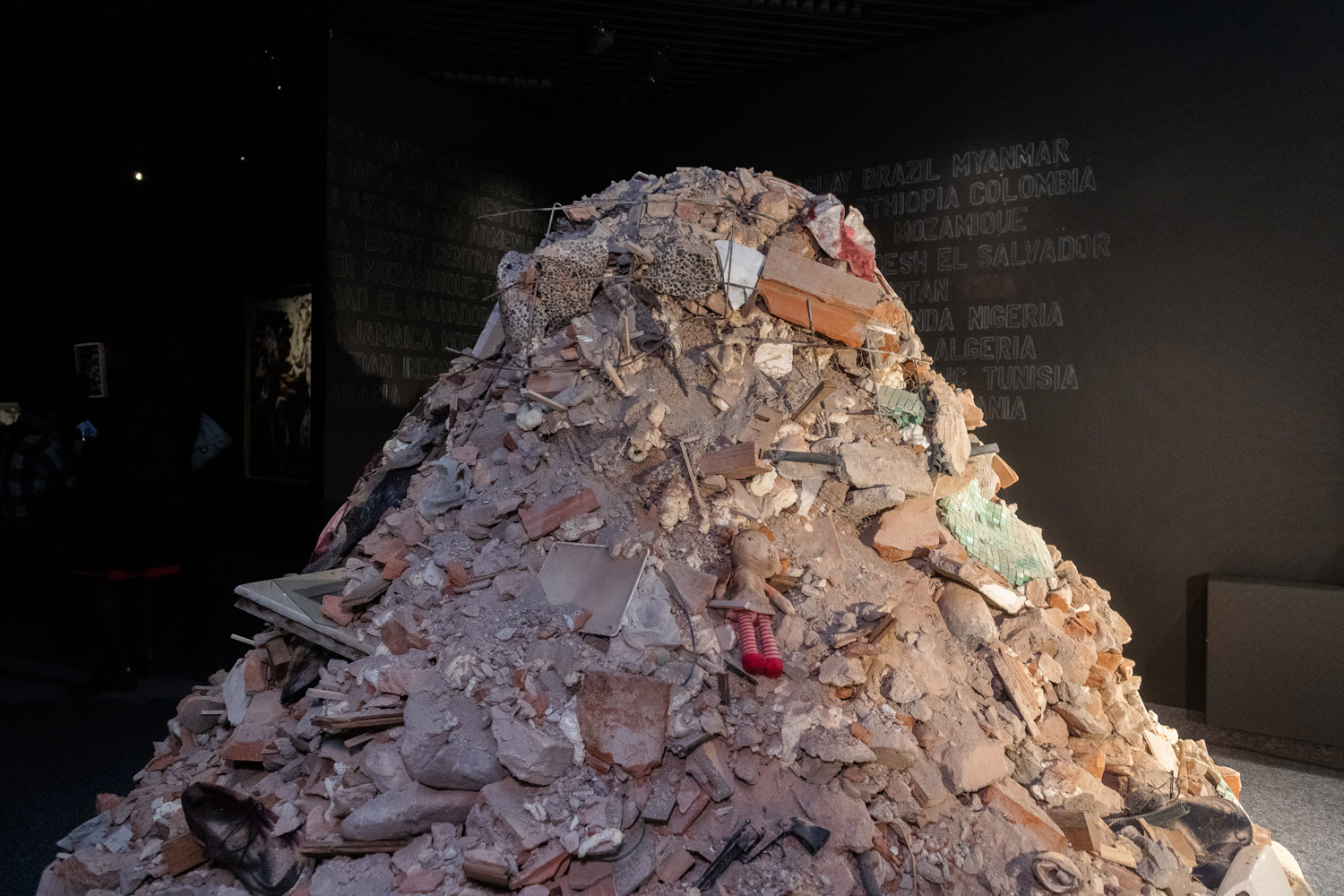
These are his windows through which he seeks a cultural solution with an unprovocative gaze, to claim the heritage and needs of the inconsistent man who cannot exhaust issues. He brings out the fi-niteness of the image in a painting that we might call corporeal. And sometimes there is an abundance of later interventions that actually cover the visibility of the portrait in a material density that takes on multicultural or transcultural polychromes, observing the recogni-tion of universal principles, in the renewal of a melting pot that is relevant today to a common identity.
In keeping with the theme chosen by curator Adriano Pedrosa for the 2024 Venice Biennale: “Strangers Everywhere”, whose title, he explains, has two meanings: “Firstly, it means that wherever you go and wherever you are, you will always meet strangers: they are/we are everywhere. Secondly, that no matter where you are, deep down you’re always really a stranger”, but everyone’s strangeness becomes a com-munity when it’s projected into the complex system of relationships we find in all of Antonello Diodato Guardigli’s art. For a safe harbour, a shelter where we can take refuge, detached from the rhythm of tho-se who sail into the unknown, and then he delivers a message: let us create the authentically certain, abandoning ideological and metho-dological diatribes and establishing a propaedeutic for universal cul-ture in a subsidiary of civil coexistence.
Andrea Barretta - Art critic